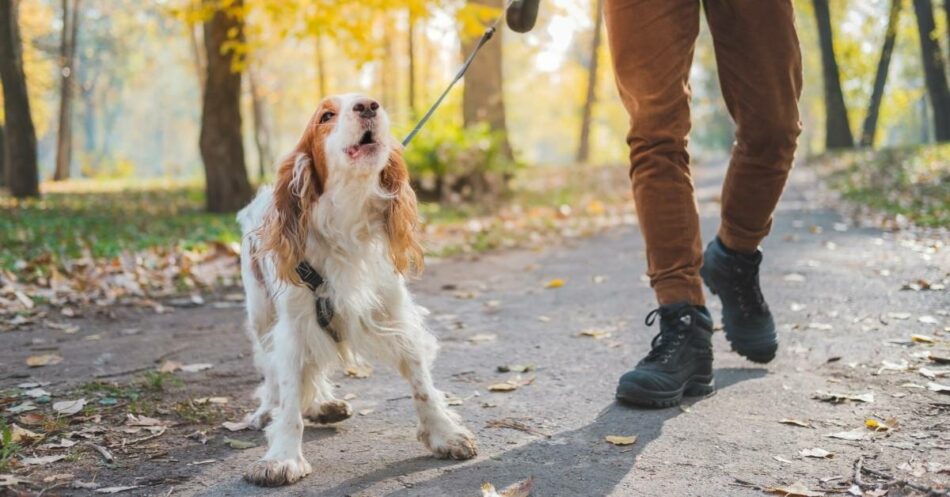As many of us prepare to return to the office after an extended period of working from home, one significant concern that pet owners face is how to manage their dog’s separation anxiety. The COVID-19 pandemic has brought about significant changes in our daily routines, and our canine companions have grown accustomed to having us around more often. Now, the prospect of leaving them alone for extended periods can be a source of significant stress and anxiety for our furry friends.
In this comprehensive guide, I’ll share expert tips and strategies to help you navigate this transition and ensure your dog’s well-being as you return to the workplace.
READ ALSO : The Ultimate Guide to Protecting Your Car Seats with Orvis Dog Car Seat Covers
Understanding Separation Anxiety in Dogs
Separation anxiety is a common behavioral issue in dogs, where they experience distress and anxiety when left alone or separated from their owners. This condition can manifest in various ways, from excessive vocalizations and destructive behaviors to physical symptoms like pacing, drooling, and even self-harm.
Dogs are inherently social animals, and they form strong bonds with their human families. When their primary caregiver is no longer present, they can experience a profound sense of abandonment and fear, leading to the development of separation anxiety.
Signs and Symptoms of Separation Anxiety
Recognizing the signs and symptoms of separation anxiety in your dog is the first step in addressing the issue. Some common indicators include:
- Excessive barking, whining, or howling when left alone
- Destructive behaviors, such as chewing, digging, or scratching at doors and windows
- Urinating or defecating in the house, even if the dog is house-trained
- Pacing, panting, or trembling when you’re preparing to leave
- Attempting to escape or follow you when you leave the house
- Depression or lethargy when you’re away
The Impact of Returning to Work on Your Dog’s Anxiety
The transition back to the workplace can be particularly challenging for dogs with separation anxiety. After becoming accustomed to having their owners around more often during the pandemic, the sudden change in routine and extended periods of isolation can exacerbate their anxiety and lead to distressing behaviors.
This disruption can not only be upsetting for your dog but can also cause damage to your home, disrupt your neighbors, and even put your dog’s health and safety at risk. It’s essential to address separation anxiety proactively to ensure a smooth and stress-free transition for both you and your canine companion.
Preparing Your Dog for the Transition
Preparing your dog for your return to the office is crucial in managing their separation anxiety. Start by gradually increasing the amount of time you spend away from home, slowly acclimating them to your absence. This can be done through the following steps:
- Desensitization: Begin by leaving your dog alone for short periods, gradually increasing the duration over time. This helps them learn that your absence does not always lead to distress.
- Crate Training: Introduce your dog to a comfortable crate or designated “safe space” where they can feel secure when you’re not around.
- Enrichment Activities: Provide your dog with engaging toys, puzzle feeders, or interactive puzzles to keep them mentally stimulated and occupied while you’re away.
- Exercise and Stimulation: Ensure your dog receives adequate physical and mental exercise before you leave, as a tired dog is less likely to experience anxiety.
Establishing a Routine to Alleviate Separation Anxiety
Creating a consistent and predictable routine can be incredibly helpful in managing your dog’s separation anxiety. Establish a clear pattern for your departure and return, as well as for daily activities like feeding, walking, and playtime. This can help your dog feel more secure and less anxious about your absence.
Consider the following strategies to establish a calming routine:
- Implement a consistent pre-departure routine, such as putting on your shoes, grabbing your keys, and giving your dog a treat or interactive toy.
- Leave your dog with a comforting item, such as a piece of clothing with your scent or a favorite toy, to help them feel less alone.
- Greet your dog calmly and without excessive excitement when you return, as this can reinforce the idea that your absence is not a cause for distress.
Creating a Safe and Comfortable Environment for Your Dog
Ensuring your dog has a safe and comfortable environment to spend time in while you’re away can significantly reduce their anxiety. Consider the following steps:
- Designated Spaces: Provide your dog with a designated, comfortable space, such as a crate or a quiet room, where they can retreat and feel secure.
- Calming Aids: Use calming aids like pheromone diffusers, anxiety-reducing supplements, or soothing music to help your dog feel more relaxed.
- Sensory Enrichment: Leave the TV or radio on to provide background noise and distraction, and consider using calming scents like lavender or chamomile.
- Hiding Spots: Offer your dog hiding spots, such as a cozy bed or a covered crate, where they can feel safe and hidden from view.
Providing Mental and Physical Stimulation to Reduce Anxiety
Keeping your dog mentally and physically stimulated can be a powerful tool in managing their separation anxiety. Engage them in activities that challenge their minds and bodies, reducing the likelihood of destructive or anxious behaviors while you’re away.
Some ideas include:
- Puzzle toys and food-dispensing toys to keep them engaged and mentally stimulated
- Interactive games like hide-and-seek or “find the treat” to encourage problem-solving
- Scheduled playtime, walks, or training sessions to meet their physical exercise needs
Training Techniques for Managing Separation Anxiety

Incorporating targeted training techniques can be highly effective in helping your dog overcome their separation anxiety. Work with a certified professional dog trainer or animal behaviorist to develop a customized training plan that addresses the specific needs of your dog.
Some common techniques include:
- Desensitization and Counterconditioning: Gradually exposing your dog to short periods of isolation while pairing it with positive reinforcement, such as treats or praise, to help them associate your absence with something positive.
- Crate Training: Introducing a crate as a safe and comfortable space for your dog to spend time in while you’re away.
- Relaxation Protocols: Teaching your dog calming behaviors, such as lying on a mat or bed, to help them self-soothe during your absence.
- Distraction Techniques: Providing engaging toys or activities to divert your dog’s attention and reduce their focus on your departure.
Seeking Professional Help for Severe Cases
If your dog’s separation anxiety is severe and does not respond to the strategies outlined above, it may be necessary to seek the help of a professional animal behaviorist or veterinarian. They can provide a comprehensive assessment and develop a customized treatment plan, which may include medication, specialized training, or a combination of both.
Working with a professional can help ensure your dog’s safety and well-being, as well as prevent further damage to your home and disruption to your neighbors.
Additional Resources and Support for Dealing with Dog Separation Anxiety
Remember, you’re not alone in navigating this challenge. There are many resources available to help you and your dog through this transition:
- Connect with local pet owners, trainers, or veterinarians to share experiences and learn from others who have been in similar situations.
- Explore online forums, blogs, and social media groups dedicated to supporting pet owners with separation anxiety issues.
- Consider joining a support group or attending workshops to learn from experts and connect with a community of fellow dog owners.
If you’re struggling to manage your dog’s separation anxiety as you return to work, don’t hesitate to reach out to a professional dog trainer or animal behaviorist for personalized guidance and support. They can help you develop a comprehensive plan to ensure a smooth transition for both you and your furry companion.
In conclusion, managing your dog’s separation anxiety when returning to work can be a challenging but surmountable task. By understanding the signs and symptoms, preparing your dog for the transition, and implementing a comprehensive strategy, you can help your canine companion navigate this change with minimal stress and anxiety. With patience, consistency, and the right support, you can ensure a happy and healthy homecoming for both you and your beloved dog.


